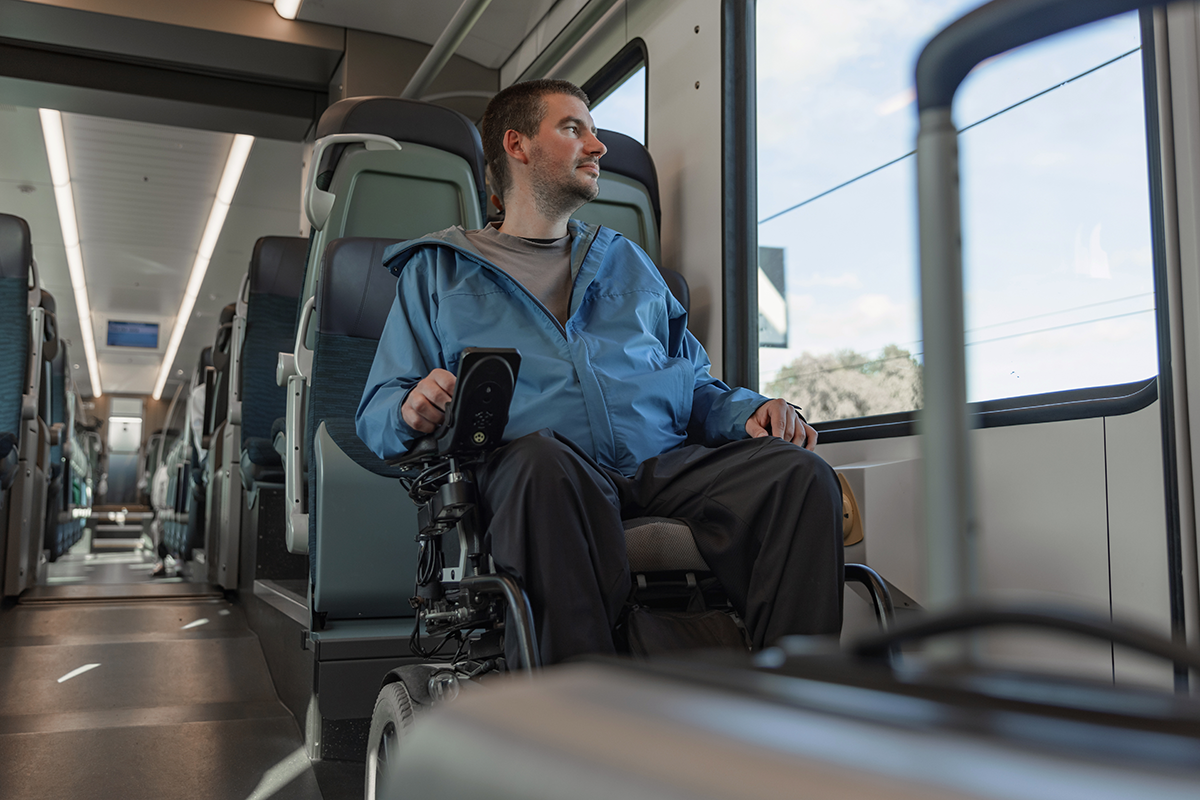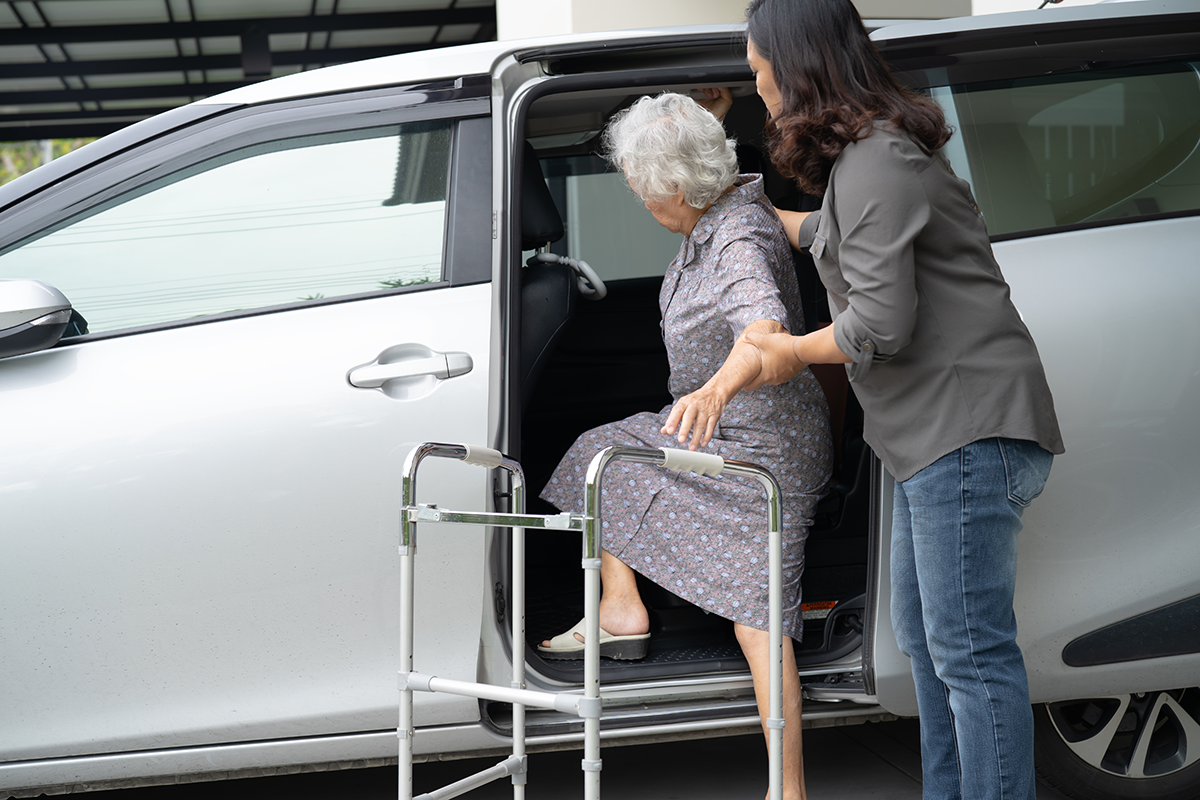Traveling With A Disability
People with physical disabilities or mobility issues are traveling more than ever before – and that’s wonderful. However, traveling with a disability creates challenges that more able-bodied travelers may never consider.
What physically able travelers get wrong about disabled travelers
“[Physically able travelers] look at disabled people as one size fits all,” says Joy Burns, Alliance and Community Coordinator for disability-travel resource Wheel the World. “They’re like, ‘Oh, you’re in a wheelchair,’ and don’t consider whether you can use a bathroom by yourself or things like that.”
Fact is, there can be all types of disabled travelers, including:
- Older adults experiencing mobility issues
- People with chronic conditions like multiple sclerosis that make it hard for them to walk or stand for long periods
- People with degenerative conditions
- People who have had their mobility curtailed by an accident
- People with sensory issues, ranging from blindness to sensitivity to loud noises or bright lights
Disabled travelers all have stories behind their disabilities, but they’re more than just that story.
Keeping that in mind, let’s value disabled travelers for their dedication to going where they want and doing what they want, and let’s talk about planning trips that make those things possible.
Vacations for disabled adults
According to Burns, the number of vacations taken by disabled travelers “has really been trending upwards since 2023.”
“During COVID people were staying home,” she adds. “They were scared; some were immunocompromised. In 2023, they were finally ready to travel.”
Berkshire Hathaway Travel Protection’s research confirmed those statements, and additionally found that:
- Roughly 60% of disabled individuals traveled domestically in 2024
- Another 14% traveled internationally
- More than half of travelers identifying as disabled said they spent more on travel essentials like airfare and lodging in 2024
- About the same number expect to spend even more in 2025
How much is that? BHTP research shows disabled travelers reported spending more than $12,000 per person on travel in 2024, while travel information firm MMGY Global’s research shows that travelers with mobility disabilities spend $58.2 billion per year on travel.
While unsettled international and economic pictures may curtail some 2025 travel, the numbers and experts agree: Desire to travel has never been stronger within the disabled community.

Trip planning for disabled travelers
For disabled travelers, good travel planning is crucial to ensuring positive travel experiences.
The most important thing to remember when planning a trip is: start early.
“You need to start planning at least six months ahead at a minimum,” and the farther out the better, says Burns, whose organization arranges travel for disabled individuals, including tours and individual travel.
Why early planning is a must
A cruise may have 2,000 rooms, but only 40 accessible rooms. Fewer still may be the right kind of accessible.
For instance, Burns’ husband is in a wheelchair because of a spinal-cord injury. He requires a low bed height. Someone with a different sort of mobility challenge may require a high bed height, so they can move directly from their device into bed.
Disabled traveler booking travel through Wheel the World are asked very specific questions about needs and requirements. And if the traveler doesn’t know, they’re instructed to find out – to measure their bed height, for instance.
Hotels and disabled travelers
Hotels can have issues. MMGY found that more than half the disabled travelers they surveyed were given a room that did not match the room they booked.
Also, eight out of 10 said they’ve encountered inaccessible showers or tubs, and half had beds that were too high for them to access.
The short answer to the problem is to ask for photographic verification of beds and bathroom facilities when booking an accessible room, but even that’s no guarantee.
A longer answer is to work with an accessible-travel specialist that vets hotels and matches available rooms to travelers for a perfect fit.
Cruises for disabled travelers
The situation is a little better with cruises; as Burns says, “they’re great because you don’t have to change hotels.”
While she lauds Virgin Cruises for their accessibility, even an accessible cruise line encounters some circumstances that are beyond their control.
For instance, she says, “If you take a cruise, you need to make sure that a port isn’t tendered” – that is, there’s not a smaller boat taking cruisers to shore.
“If a port is tendered, a wheelchair probably isn’t fitting on that tender, and you’re not going ashore.”
Also, you need to check if a port of call has accessible activities in the dock area, or accessible transportation to take them to accessible activities inland.
Finally, see if wheelchairs and other accessibility aids can be used throughout the ship. Many cruises don’t allow wheelchairs in hallways or in staterooms.
Tours for disabled travelers
Tours are often thought of as a low-effort way to travel, but that isn’t always the case for travelers with mobility challenges.
For instance, traveling on a tour bus may be fine, assuming there’s a place for the wheelchair, but when the bus arrives at its destination, and it’s uphill both ways and cobblestone streets, is that a positive situation?
Wheel the World, among others, organizes tours specifically for travelers with mobility issues and can help mitigate those issues.
DIY travel for disabled travelers
The problem many travelers have with organized travel, whether cruises or tours, is the organization aspect. They’d rather venture out on their own.
Even in those situations an organization like Wheel the World can help.
Burns relates a story about her husband who was traveling with her in Positano, Italy. An accessible-travel specialist recommended he rent a power chair for the day, so he could travel to the hills above town.
He took the specialist’s advice, rented the chair, and according to Burns had a great time.

Working with an accessible-travel specialist
Stories like these are proof: No matter what type of travel you’re considering, it’s valuable to work with an individual or organization that has deep knowledge of accessible travel.
They know:
- The best places to travel
- Where to stay
- How to get around
- How to travel
In addition to Wheel the World, there are many organizations and travel advisors specializing in accessible travel.
Choose one you trust, start the process early, have requirements and measurements in hand before you start, have some ideas of where you’d like to go, and have questions ready.
The best places for disabled travelers to go
It’s hard to generalize about destinations, Burns says. You can’t say old European cities are not accessible while modern American cities are.
International destinations
“It’s really so specific,” she adds. “Barcelona is very accessible. South Africa has made itself much more accessible. Athens, Greece, is very accessible.
“Did you know there’s an elevator at the base of the Parthenon to take you up to the site? And the Parthenon is thousands of years old.”
In addition, she says that Athens and Barcelona offer group tours for disabled travelers that use accessible vehicles to take travelers to accessible sites.
Domestic destinations
In the U.S., Burns cites Fort Lauderdale as an example of a city that’s made itself very accessible for travelers; Hawaii also receives high marks from disabled travelers.
Still, you can’t generalize that Sunbelt cities are more accessible and Rust Belt cities aren’t.
In general, there’s room for improvement. According to MMGY, eight in 10 travelers want more and better sidewalks, ramps and mobile lifts, as well as more accessible places to stay.
Finally, there’s the question of climate. Some disabled individuals can’t handle extreme heat or humidity; others thrive on it.
For whatever destination you have in mind, check the long-term weather and average temperature on a site like the European Centre for Medium-Range Weather Forecasts, or for domestic travel, NOAA’s long-range forecasts.

Flying with a disability
One of the most difficult challenges for travelers with physical issues is actually getting to their destination.
The culprit is flying.
Airplanes and airports were simply not designed with mobility-challenged travelers top-of-mind.
The result is tough spaces to navigate and equipment issues throughout.
In the airport
Anyone who’s used a wheelchair pushed by an airport employee to navigate an airport knows they can be a lifesaver (though MMGY found that 60% of travelers wish the service was more prompt).
The employee generally knows all the shortcuts and workarounds, sometimes you’re able to skip lines, and often a departing plane will wait for you to make your connection.
However, Burns recommends you use your own mobility device to traverse an airport, so you can have it close by.
Specifically with a wheelchair Burns recommends:
- Attaching a laminated label to your chair with instructions on how much care it needs.
- Arriving early at the gate to make sure you can prep your wheelchair for travel.
- Putting any removeable parts – cushions, batteries, footrests – in a clearly labeled bag.
Getting on the plane
If you have severe mobility issues, you also need to make sure you can get from your chair on board and into your seat. Very often this is done with an aisle chair.
Even though your ticket may be checked “wheelchair” or “assistance,” you should still talk to the gate agent to make sure there are people ready to help get you up the ramp, onto an aisle chair and into your seat.
Using the bathroom
The other major issue once you’re on the plane is using the bathroom. An aisle chair may help, but Burns recommends something more extreme: Dehydrating yourself.
“I know it sounds bad,” she admits, “but many travelers limit their intake of fluids for a full day before to make sure they don’t have to use a bathroom on the plane.”
Regardless of your strategy for getting to the gate and on board, be sure to let the airlines know you need assistance, and the sooner the better – though any time up to 24 hours before departure works.

What to pack
This is one area where disabled travelers and able-bodied travelers can work from the same playbook. Outside of a variety of mobility aids and condition-specific items (comforting items for people with sensory issues, for instance), what you pack is largely going to be what anyone packs for a vacation.
Not sure what that entails? Check out our packing guides with downloadable lists for different types of trips and cruises.
Support animals
Airlines have tightened their requirements for support animals.
According to ADA Data, airlines are required to allow service animals and emotional-support animals to sit with a traveler in the cabin, usually in a bulkhead seat.
However, they may restrict unusual and heavy or large animals, and foreign flights may only allow dogs on board.
Even if your animal has a vest and/or harness, expect questions at the gate.
How to schedule your day
Disabled travelers may need to schedule their time differently than other travelers.
They may get up later in the morning, for instance, or they may need down time in the afternoon. They may need an environment with less sensory stimulation, or breaks from stimulation.
They may not be able to stand or walk for long periods of time.
As a result, tightly scheduled tours may not be the best fit. An ocean or river cruise with multiple types and levels of excursions and lots to do back on the ship may be a better option.
Trips for disabled seniors
Most disabled travelers haven’t been disabled their entire life. Often it’s a result of changes late in life, such as an accident or illness.
Whatever the reason, some senior travelers might find themselves traveling with a mobility challenge or other disability for the first time, and may be scared to travel.
Burns recommends a progression to ease the transition to a big overseas or domestic vacation.
- Start with a day trip in the car. “Do a weekend getaway – drive a couple of hours, use Wheel the World to get the right hotel room,” Burns says. “Don’t go to Greece right away.”
- Then take a two-hour flight. “Go to a city with good accessibility. Don’t take a longer flight where you might have some bathroom issues. See what it’s like to be on a plane.”
- Finally take an overseas flight. “Take what you’ve learned from your shorter trips and apply it.”
Other recommendations
Fly direct. When flying, try to fly direct as much as possible. In addition to minimizing the hassle of getting across a busy airport, this lessens the chances of a mobility device going missing.
Plan ground transportation. When you’re on the ground, use tools like AccessNow and Wheelmap to identify accessible venues and routes. The Transit app lets you set accessibility preferences in its Settings section.
Network. Wheel the World has an accessible-travel community on Facebook. Similar groups can be found at the AccessibleGO or inside disability-specific groups.

Travel insurance for pre-existing health conditions
Travel insurance is important for all travelers and most trips. It’s especially vital for disabled travelers.
One of the biggest reasons why is the coverage for pre-existing conditions that comes with many travel plans, provided you buy coverage within outlined parameters, such as within 14 days of making a final trip deposit.
With pre-existing-condition coverage, a traveler with a condition like lupus or multiple sclerosis can be reimbursed for prepaid travel expenses if they have to cancel a trip because a flare-up of their condition makes it impossible for them to travel.
In addition, this coverage will pay for medical expenses if you have to see a doctor for your condition while you’re traveling – and will reimburse you for unused travel expenses if your condition forces you to interrupt your trip.
Berkshire Hathaway Travel Protection offers one of the industry’s broadest array of travel-protection plans, with products designed to cover everything from cruises to adventure travel to luxury trips.
Travel is for everyone. With good planning, great resources and travel insurance, disabled travelers can go practically anywhere.
And the travel picture for these travelers is looking brighter all the time.
Questions About Travel Insurance?
Check out our online guide, "What Is Travel Insurance All About?" We've provided in-depth answers to all your travel insurance questions, starting with the basics.